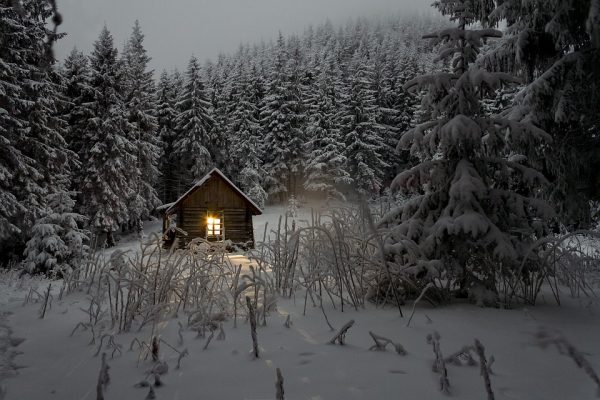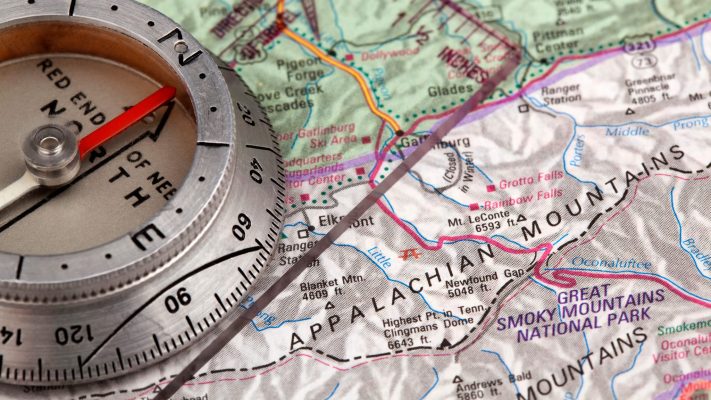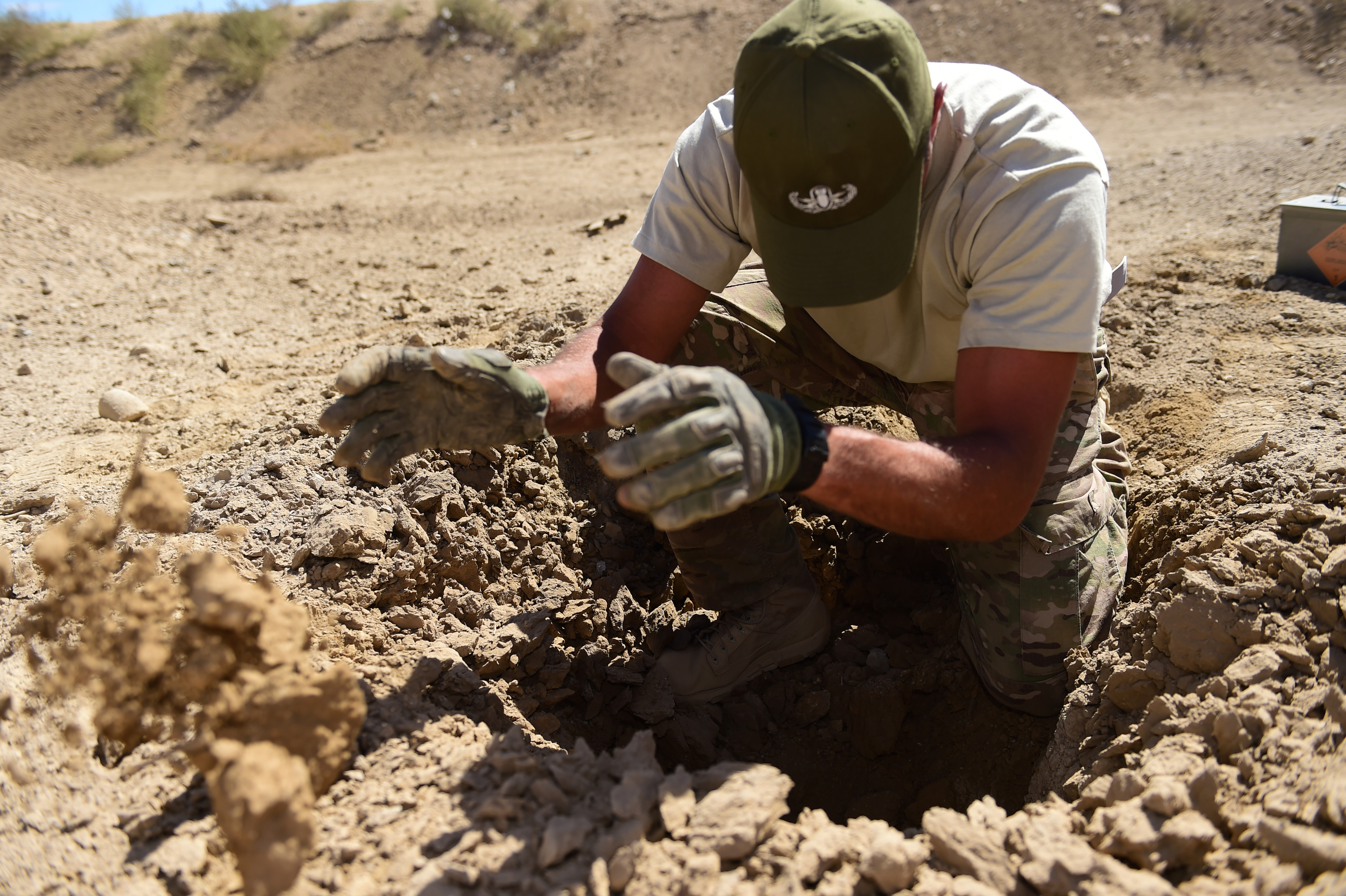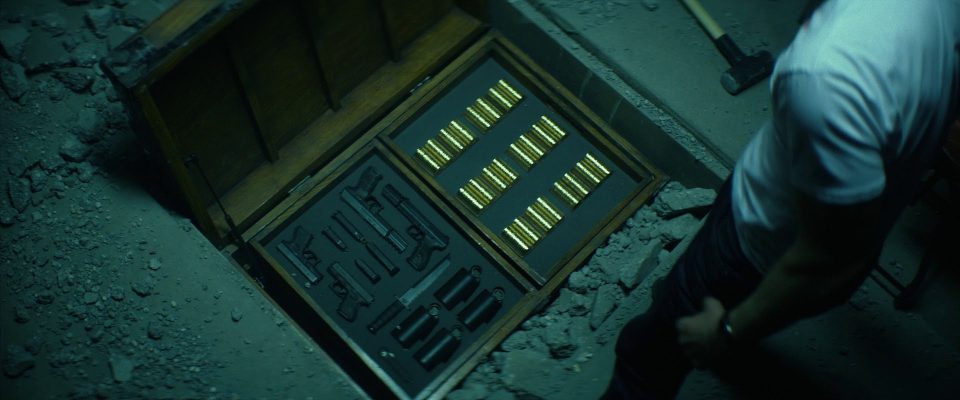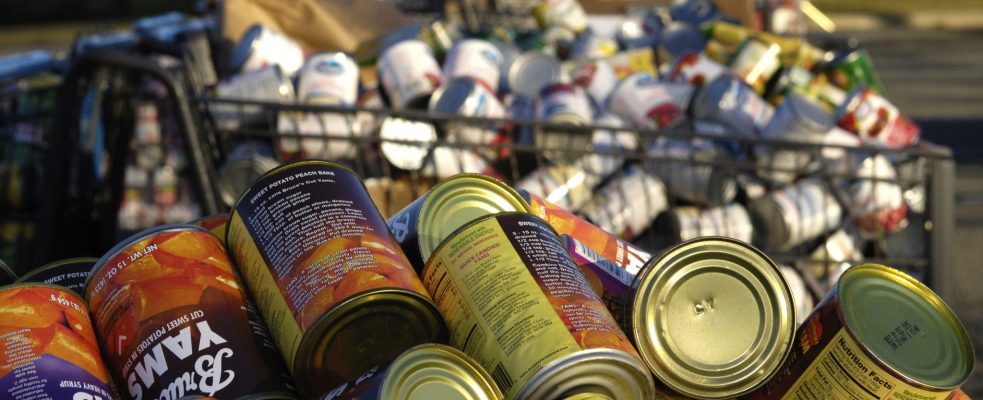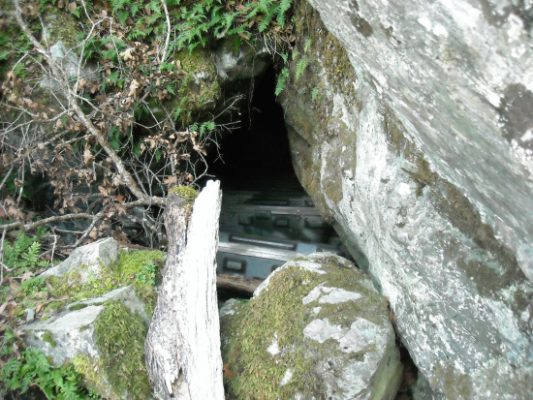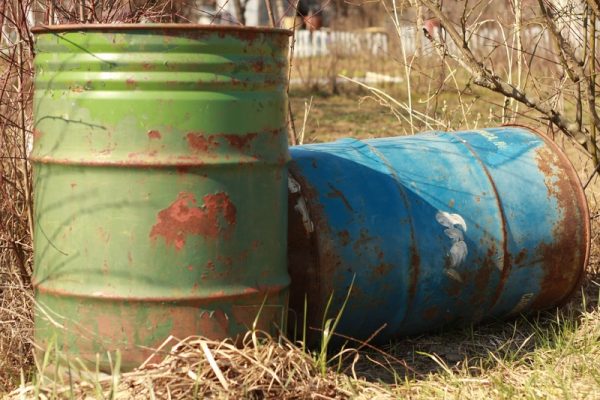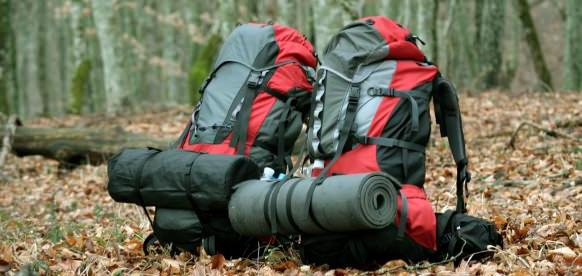Caching – keeps your food, water, weapons and supplies safe
In an emergency situation, being able to leave home and have access to guaranteed supplies is very important. Having a survival cache is a survivalist’s solution to make sure that you have supplies available that you would not be able to carry in a bug out bag.
People have been caching supplies for hundreds of years, such as weapons, treasure, heirlooms, and supplies. Only this type of caching is for when you need to bug out of the home, and survive. Some even use their survival cache as a way to make sure their weapons and money stay protected.
In this post, we take a look at how you can make sure your supply cache is safe, secure and optimized, so that you have a stockpile of supplies for when you, your family, or your prepper community needs to bug out and replenish supplies, or live off them in a bug out location.
When we have bugged out, our bug out bag cannot possibly carry much more food and equipment than what is necessary for a period of about 72 to 96 hours. You can try to fit more in, but you are going to be greatly encumbered with weight and that’s not effective when you’re on foot, or for space in a car. Aiming to carry a quarter of your body weight is an effective maximum. For those other essentials that you can’t carry, we store them in hidden supply caches and mark down their coordinates.
Without a survival cache or bug out location, in a long-term survival scenario, once you have exhausted the food and water from your kit you will have to rely on your survival skills for food and water. In those instances, a cache of food, water, fuel, and equipment will be very valuable and potentially lifesaving in long-term survival situations.
Food and water storage at home is also important, but is not the same thing as a cache of survival supplies away from your home. If your emergency occurs while you are at home and you are able to stay at home your food storage will obviously be accessible to you, but this is by no means guaranteed and having that backup supply when you can’t stay in the home, or can’t get to it, will greatly increase your chances of survival.
What is a survival cache or bug out location?
Survival Cache – A survival cache is a stockpile of supplies hidden (cached) away in a location only you know about. Hiding the cache is the priority as you want to be able to leave your survival cache for an extended period of time, only to use it when you really need it. On that premise, most survivalists and preppers prefer to bury their survival cache in a shallow grave, and mark it with distinguishing features that only they know about such as being next to a forked tree, a certain breed of tree, or a specific rock.
Bug out location – The bug out location is a bit different. While a survival cache is easily concealable, a bug out location is more of a base away from home. This would be your stereotypical cabin in the woods, lakeside log hut, or a clearing you have pre-marked where you can take your bug out vehicle and rendezvous with other preppers that you have provided the location to. As I point out later, if you do have a bug out location, you might want to consider keeping your bug out supplies in a hidden cache near that location for security purposes.
Mapping and coordinates – One of the important things survivalists use to mark both their supply cache and bug out locations is a map grid reference. Using simple navigation and mapping skills, you can mark a location down to the very square meter of where you are standing.
Having an accurate grid reference is more important for a survivalist cache as it ensures that if the landscape was to change, you could still locate that cache. It is also a way to notify your team or community of preppers that might have reached the area first, that your survival cache is at grid reference 82445,941269. A grid reference like this is known as a 10′ figure grid reference and would lead anyone using it to a point on an area map that is precise to a one-square-meter area.
A bug out location would easily be found using an eight figure grid reference, as this would lead someone to a 10-square meter area. Grid references can be done manually, with a map, or very easily with a GPS device, which is much more efficient when calculating the exact area of a hidden cache.
Why should you have a survival cache?
There is just no way you can carry enough in your bug out bag to last for more than three days, and even that’s heavy enough. So having that survival cache is just a way for you to be able to refuel your supplies and keep moving, or to set up camp and remain there until it is well and truly safe to return home.
There are some other reasons why having a supply cache is not only effective, but also common sense for preppers. Some of those reasons are:
- Having survival caches allows you to spread your supplies you need to survive, rather than having them in one place, so that should your survival supplies be compromised in one unique location, you still have reserves in other hidden areas.
- To strengthen your bug out plan, so that when you bug out, you can include more family members and friends and don’t have to carry extra food for them in your bug out bag, but rather have a supply for them cached away.
- To keep your bug out bag lighter so you are able to move quicker and have more freedom to carry other things, whether it be to help an injured person, a weapon, or if you don’t have enough space in the car.
- For those that have bug out cabins, or survival shelters and want to make sure that any food supplies and survival gear in them are not compromised. You can use survival caches to keep those supplies safe and secure.
- For the preppers concerned about their homes being ransacked by desperate gangs, or hungry people during a SHTF scenario, or to ensure that their weapons are out of the home and away from law officials, should they ever come to take your guns or prepper stockpile.
As you can see, there are a number of reasons to keep a supply cache, but the most important reasons are to do with the safety and security of your supplies. This is because at the end of the day, without food, water, medical gear or survival essentials we’re in big trouble. As preppers, it’s our job to keep that from happening.
How to store a survival cache
Regarding how you store your supply cache, if you have a prepared bug out location it’s simple, that cabin or camp can become your cache but remember that even if your bug out location is in the middle of nowhere, it is still visible and may be vulnerable to exploitation by others whether there is an emergency or not.
Storing at a bug out location – If you are going to make your supply cache at a cabin or other obvious locations, consider hiding your supplies under the floor or buried closeby rather than fitting out your cabin as a home away from home. This ensures that if opportunistic scavengers or just ransackers find your bug out location or cabin, that they are not going to find any of your valuable survival supplies.
Caching in different environments – If you don’t have a solid structure or particular place in mind for a bug out location, then you can hide your cache by burying it or disguising it. There are a number of things to think about when storing your supply cache in different environments, whether it be in swamp caches, desert areas, mountain caches, caves, or any other habitats.
If you are considering caching your prepper supplies in a cave, be sure to conceal it well as people are naturally curious about what a cave holds, and for those seeking shelter (whether they’re human or animal), you will likely find them in a cave. Open fields should also be used in a very discrete manner when using them as survival cache locations as you might be visible to onlookers who will ransack your goods the moment you are gone.
Wherever you do decide to make your cache make sure you can find it again easily. Keep its location marked on a map and use a grid reference and accurate description of its location. Using a GPS reference for it will make it much easier for you to locate your hidden supplies. Don’t let all that preparation go to waste by losing your cache when it really counts.
What should you store your supply cache in?
When you are storing your supplies, you need to make sure that whatever area your supplies are cached in, they are properly protected and stored in a manner that avoids moisture, animals getting to it, or decay.
Moisture will be your primary enemy for any survival cache, so avoid using wooden boxes or containers. However, there are some other things that may compromise your survival supply, such as using thin plastic containers and tubs that animals such as rats or wild dogs can gnaw through, or metal boxes that are able to rust. Instead, containers that will keep your survival supply protected and safe are:
PVC tubes – You can make a small survival cache with simple PVC piping. Of course, this won’t hold a significant amount of materials, but is great if you need to cache survival gear, ammunition, or a small number of long-term food supplies as they can all fit into a wide PVC pipe. The most important thing to remember is to make sure you use a good sealant on the ends of the PVC pipe, as you want to avoid moisture and water seeping through the lid or screw on ends of the pipe.
Hard cases – Strong and durable cases such as Pelican Cases make great supply cache containers. I find they are the best maker of storage and protective containers as all of their cases are watertight, airtight, dustproof, chemical resistant, corrosion proof and are very tough cases that don’t cave in. A lot of their containers come with foam inserts and organizers as well, which is not only great for survival supplies, but also if you intend on caching your weapons in a Pelican transport case and want to make sure that they are kept in the safest storage possible.
Tube vaults – Since the common of fear of possible gun grabs by governments, specific tubes for caching weapons are available and work very well. These are a lot stronger, sealable and more spacious than PVC tubing and are great to bury in a supply cache location. I use a small MTM SAC small caching tube which can pack in a lot of essentials, however, this won’t fit any large weapons. If you are after that, the Mono Vault is a more sizeable option and is a very durable, airtight container with an inner section and an outer ‘burial shield’ layer.

Plastic barrels – If you are storing a lot of food and supplies for a large community, you might want to consider using high-density polyethylene storage drums. I have used Eagle 55 gallon barrels as a bug out location supply holder and they can pack a heap. These are strong, food grade barrels with a lockable lid.
Most are concerned about the pressure of the ground which might cause barrels like this to collapse. However, from the top down they have no problems, the one thing you should do is to make sure that the barrel is packed, as this will stop any possible buckling of the sides of the barrel if the ground is denser from rain or frost.
Now that we know how to hide our survival cache and some options for storing our hidden supplies, let’s take a look at the important survival supplies that we should prioritize for a supply cache.
What do you keep in a supply cache?
Situations where you can access the food and water you have stockpiled in your home could be severe winter weather that leaves you trapped due to snow or ice, localized power outages, food and fuel shortages. But there are circumstances where leaving the home is much safer, such as cases of gas leaks, floods, sickness outbreaks, civil unrest, nuclear, biological, or chemical attacks. In these scenarios, it may well be safer to leave the home.
If you do have to bug out, you can only count on having what you can carry in your bug out bag and perhaps not even that if you are away from home when the emergency occurs. So what should you store in your survival cache to make sure you are prepared for the worst?
How to cache food
Food is an obvious part of your cache, but cached food may not be rotated or used for a long period of time. Unlike food stored at home for emergencies, food that is in a supply cache needs to be food that has a long shelf life and packed in a manner that extends that shelf life.
Storing foods – It is also important to pack and store those foods properly so they don’t spoil. Even food in tin cans will spoil if they become moist and exposed to the elements, as the cans will rust and spoil the contents. Additionally, dried foods such as beans and lentils will be susceptible to damage by rodents and insects. These should be packaged in one of the ways mentioned above to ensure that the contents do not spoil and begin to develop rot or mold. When you are packing foods, you can preserve the foods by using mylar bags and moisture absorber sachets.
Foods to cache – Consider foods like dried lentils, beans and whole cereals such as oats and wheat, as these are all food types that have very long shelf lives. Flour and other processed grains will not last as long and are more susceptible to moisture. Tinned foods can also be stored in your supply cache as long as you store them in the same way as your dried foods to avoid the tin from rusting. Corned beef, tinned meat and fish, tinned vegetables, soups and hot dogs are great tinned foods to store.
Store cooking tools – As well as food you will need to cache something to cook with so that you can actually cook your cached food. A single large cooking pot will be most versatile. There is no need to try to replicate your home kitchen in your cache unless of course you are running a community bug out location and are catering for a large family or group of preppers. If it’s just you and your family, a large pot and a few utensils will be the most versatile and space efficient for your survival cache. That large pot can also purfiy your stored water by boiling it.
Storing seeds – If the survival situation is an extreme SHTF event even your stockpiled food will eventually run out, so you may need to think about food in the very long term. Seed caching for a vegetable garden and for staple foods such as wheat and corn is a way around this. These will need to be rotated every few years as even seeds have a shelf life. These must be strictly kept and you must not be tempted to eat them or use them as bait for traps, as seeds offer a way for you to have a sustainable food supply, which is a very wanted commodity should food supplies run out.
As well as crops, cache equipment for establishing trap lines and hunting, spools of wire for making snares, modern metal traps and fishing rods, hooks, sinkers, and line, as well as firearms or archery equipment for hunting will be great as they will help you sustain yourself long after your stocks of food run out.
How to cache water
Even if your survival cache is in a wilderness environment near a stream or other plentiful source of water, make sure you cache water anyway as the nature of your emergency might mean water is contaminated.
Storing the water – Plastic jerry cans or even smaller plastic bottles of mineral water or just filled from your tap will be better than nothing. If your survival cache is part of a well-prepared bug out location such as an off-grid survival cabin, part of your preps should be to establish rainwater collection at your bug out location as by the time you come to bug out you could easily have collected hundreds of extra liters of water without even being there.
As well as physically storing ready to use water you should cache what you need to purify water. At the very least you can use your large cooking pot to boil water but should also cache an effective filter and means of collecting water.
Prioritizing water – Remember when it comes to survival, you will need to change your expectations when it comes to water. It will have to be prioritized for cooking and drinking. In order to preserve clean drinking water, you may have to wash in a stream or with water from a puddle or your rain collectors, while any of this water can also be used for drinking if processed and purified properly it will not always look as appetising as water from your tap or from a bottle, it may also smell slightly if you have used chemical purifiers but as long as you purify it properly you will be fine to drink.
How to cache fuel
Perhaps your plan for getting to your cache or bug out location is to use your bug out vehicle. You might have a petrol or gas-fired stove to cook your rations and have cached power tools such as a chainsaw to make your life in a long-term survival event easier. If you have, remember you must stockpile appropriate fuel as well, otherwise, none of those things will be usable.
It is useful to have fuel saved at home too as long as you take into account local laws regarding the storage of fuel. If you will need this fuel for a bug out vehicle, remember that you give yourself a significant advantage by never letting your car get lower than half a tank of fuel in the first place.
Storing the fuel – You should store fuel in well-marked metal jerry cans to avoid confusion with your water supplies and to keep it safe. It should be kept out of direct sunlight and just as with any tinned food you are storing you need to ensure it is kept free of moisture as much as possible so that the containers don’t rust.
If you are storing gasoline, remember that it is particularly volatile so do not endanger your cache or bug out location and expose it to fire risks by storing your gasoline side by side with other supplies, store it separately. Also, remember that if you are caching fuel for a chainsaw or other power tools you will need to store chain oil and 2 stroke oil as well.
Gasoline and diesel have the added advantage of being compatible with many camp stoves and lanterns so it is multi-purpose but you could also choose to store gas cylinders for powering stoves, lights and even heaters. If you are storing gas in large cylinders, it will normally be propane and you will need the appropriate regulators and tools to make use of it. Just as with gasoline, remember how volatile this is, don’t make your survival situation worse by destroying your kit or injuring yourself trying to use it. Make sure you know how to properly install and use propane cylinders.
Firewood – A stockpile of pre-prepared firewood at a bug out location or survival cache is another good idea. This could be potentially unnecessary in a woodland environment where you might have access to abundant stores of wood but if you have time to prepare a cache why not spend some time prepping wood for cold weather as well?
What tools should you keep in a supply cache?
Tools are heavy, often too heavy to carry in a bug out bag and possibly not worth the space in a bug out vehicle if you can prepare a cache in advance. Of course, there are some tools you should have in your bug out bag, such as a survival knife, small saw such as a folding saw or a bow saw blade which you can later improvise a handle for and a small to medium sized axe.
While these tools are suitable for even long-term survival situations, if you have the right skills, your life at a static bug out location will be made more convenient if you can cache a few tools as well.
We have already discussed caching fuel for a chainsaw which will make wood processing much quicker, but remember that chainsaws are very loud and you may want to be stealthy due to the nature of your emergency. If you are not caching a chainsaw or can’t use your chainsaw for fear of discovery make sure you have cached a full-sized felling axe and buck saw.
Other tools such as a hammer, splitting wedges, gardening tools if you are going to establish your own crops and consumable items like, nails and screws will help you turn your simple supply cache into a survival sanctuary and eventually return to civilization, or build your own in the wilderness.
Starting a survival cache is easy and should be done
Whether you are planning on bugging in, or bugging out, or are just wanting to maintain the security of your survival supplies, having multiple supply caches in locations only you know makes you much more able to withstand any disastrous event.
As you can see from this survival cache guide, there are a few important things to remember, such as using the right storage bins or containers for your survival cache, hiding and marking the position of your supply cache, and making sure that you have packed the right essentials for your survival cache or bug out location.

